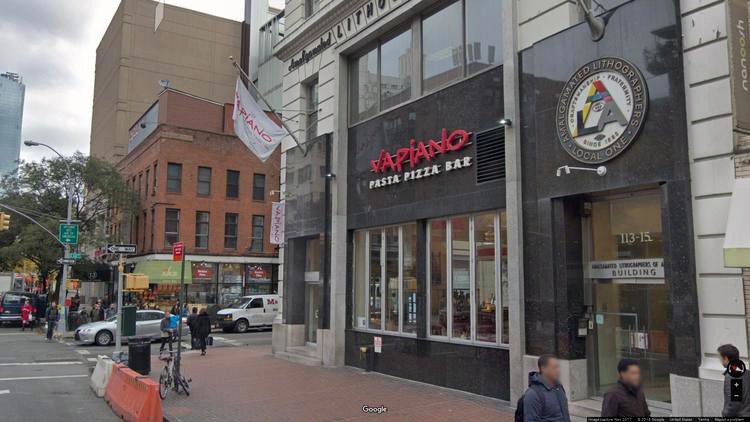In the heart of Manhattan lies 113 University Place, a location steeped in history and a microcosm of the dynamic and evolving narrative of New York City. The address is not merely a physical point on a map; it represents a confluence of architectural innovation, cultural evolution, and urban development. Over the years, this site has transitioned from a quiet residential enclave to a bustling hub reflecting the rhythms of its vibrant surroundings.
The story of 113 University Place is intrinsically linked to the broader historical tapestry of Greenwich Village. Established in the early 19th century, Greenwich Village was envisioned as an escape from the rapid industrialization characterizing much of New York City. The Village’s streets, often winding and intimate, evoke a sense of nostalgia, representing a sanctuary of creativity and freedom. Many notable literary figures, including Walt Whitman and Edgar Allan Poe, breathed life into these avenues, weaving their stories into the very fabric of the neighborhood.
Architecturally, 113 University Place embodies a dialogue between various styles over centuries. The building stands as a testament to the evolution of urban architecture, encapsulating the aesthetic aspirations of different periods. Predominantly constructed in the late 19th century, the structure reflects the Romanesque Revival style that was prevalent at the time, characterized by its robust masonry and intricate detailing. Such architectural flourishes serve as a metaphorical bridge linking the past with the present, illustrating how contemporary life continues to be enriched by historical legacies.
In proximity to Washington Square Park, one of the city’s most iconic green spaces, 113 University Place benefits from its strategic location. Washington Square Park has served as a vital communal area, a stage for artistic expression, and a gathering spot for diverse groups throughout history. From the bohemian artists of the 1950s to modern-day activists, the park has encapsulated the spirit of progress and change. The presence of 113 University Place within this context allows it to absorb the energies of the spirited debates, concerts, and performances that frequent the park, thereby enriching its own narrative with vibrancy and dynamism.
As the decades unfolded, the building’s purpose morphed. Once the domain of burgeoning artistic communities, it gradually transitioned to accommodate businesses that reflect the entrepreneurial spirit of New York City. Today, 113 University Place houses a mélange of offices, providing a space for innovation and collaboration. It stands as a testament to resilience, adapting to the needs of the surrounding community while retaining its historical roots. The juxtaposition of the building’s storied past with its contemporary uses creates a fascinating interplay, akin to a palimpsest where the older texts are nostalgically embedded beneath newer narratives.
The neighborhood surrounding 113 University Place has been a tapestry of cultural diversity. The 20th century saw an influx of immigrants, each group leaving an indelible mark on the area. This influx has fostered a vibrant cultural milieu, characterized by an eclectic array of culinary, artistic, and social offerings. From artisanal cafes to vibrant galleries, the ambience pulsates with an undeniable energy, attracting both locals and tourists. This cultural confluence enriches the experience of visiting 113 University Place—entering its premises is akin to stepping into a microcosm of New York City itself.
Furthermore, 113 University Place serves as a critical link to the narratives of social movements. The Village has been at the forefront of many progressive movements, shaping the course of American history. From the suffragette marches to the Stonewall riots, this locale has been a stage for transformation and activism. The building, by virtue of its placement and history, resonates with the echoes of these pivotal moments, offering a silent homage to those who have come before. As urban landscape and activism intertwine, 113 University Place emerges as a symbolic witness to the relentless pursuit of equality and justice.
Additionally, one cannot overlook the natural beauty that complements the urban landscape surrounding 113 University Place. The area is dotted with mature trees, historic brownstones, and tranquil squares, crafting a picturesque setting that contrasts with the cacophonous energy of Manhattan. This juxtaposition serves as a reminder of nature’s resilience amidst urbanity, inviting contemplation and appreciation—a poignant metaphor for the human spirit’s ability to flourish even in the most bustling environments.
As one traverses the ever-evolving streets of Greenwich Village, 113 University Place stands not merely as a physical structure but as a repository of stories and experiences. It is a confluence of history, architecture, culture, and social activism, a living piece of New York’s perpetual narrative. The building’s legacy is absorbed into the greater consciousness of the city, echoing the dreams and aspirations of generations.
In conclusion, 113 University Place is more than an address; it is a reflection of the continual transformation that characterizes New York City itself. Steeped in history, enriched by culture, and embraced by a community of diverse narratives, this location invites exploration and reflection. As you engage with its surroundings, you are reminded that every structure has a story, and that the heart of a city lies not only in its skyline but in the countless tales woven through its streets.
